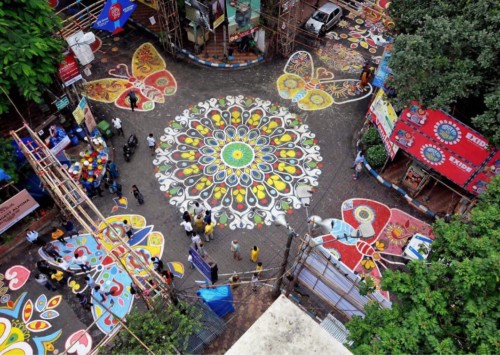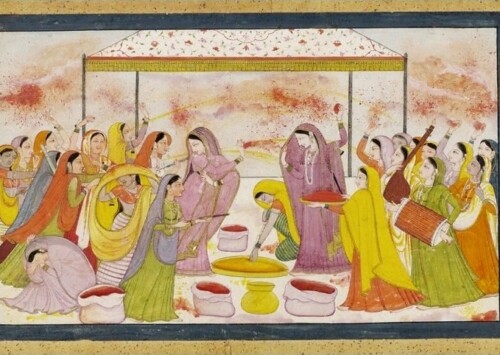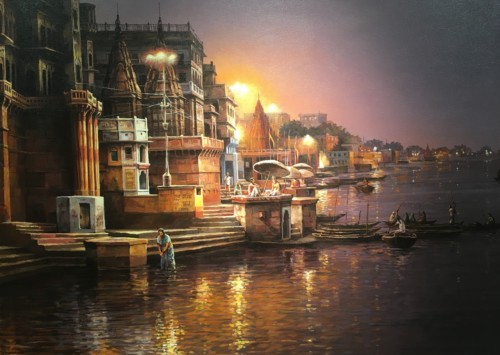Rogan painting: Keeping a dying art form alive
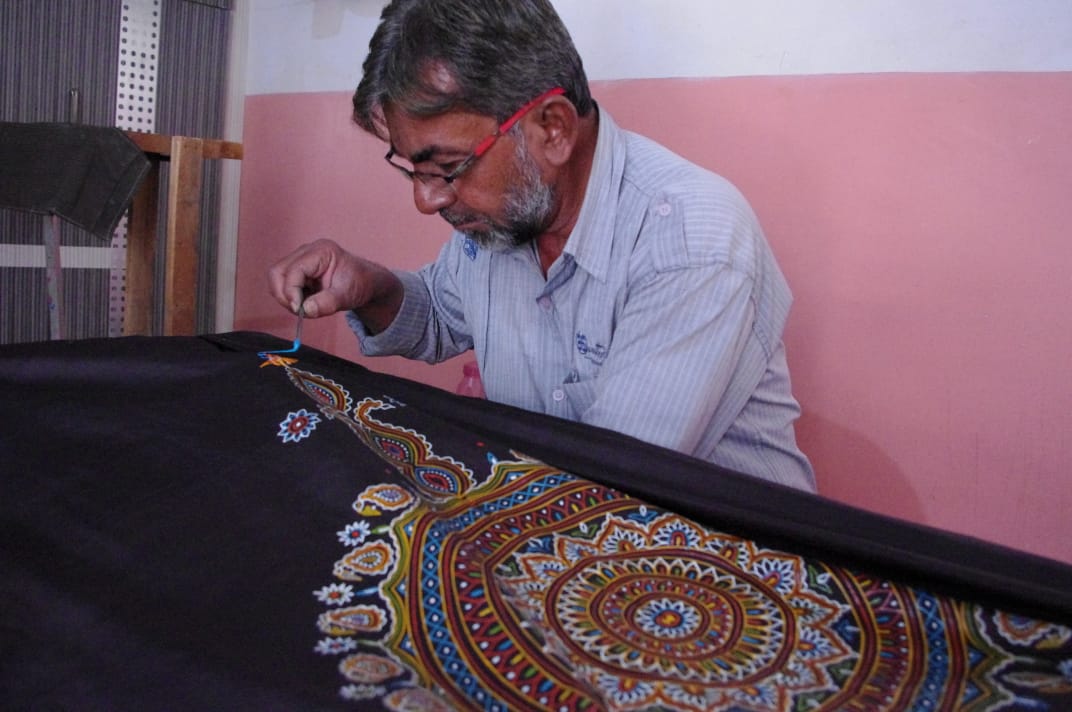
Abdul Gafur Khatri, a Padma Shri Awardee, painting Rogan art on a fabric (Photo: Jabbar Arab Khatri)
Rogan artwork is traditionally designed on bridal wear and wedding fabrics using rich bright natural colours without using any drawing brush.
The Rogan fabric paintings are produced through an arduous process. The term Rogan means “oil-based” in Persian. First, castor oil is extracted from castor seeds, castor crops are commonly grown in the Kutch district. The oil is boiled for more than 12 hours periodically. The whole process takes around two days, then heated castor oil is then mixed with cold water until it thickens into a sticky golden-brown substance called Rogan.
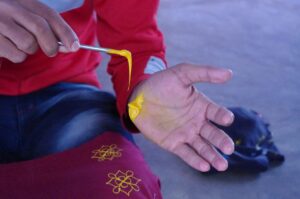
Rogan paste is carefully twisted on the tip of the rod to create various designs and patterns on the fabric (Photo: Jabbar Arab Khatri)
Then the next step is adding colours. The colours used in Rogan paintings are natural mineral pigments which are ground with stone and then mixed with a little amount of water, adding Rogan in it using a stone pestle so that it is mixed with the colours properly.
“We use natural pigments to make the base strong, chemical colours fade away quickly whereas natural colours will stay forever and there will be no side effects either,” Muhammad Jabbar Arab Khatri who has been practicing Rogan art for almost 14 years in Nirona village of Kutch tells Media India Group.
The prepared Rogan is then immersed in water and stored in containers to prevent it from drying and hardening.
“The whole process of converting castor oil to Rogan paste is usually done in a forest or isolated place as it is a dangerous process and sometimes it does catch fire. We take all the precautions before doing this process, yet not everyone can do this safely,” adds Jabbar.
In the past, many families in Kutch district practiced Rogan art, but now Khatri is the only family preserving the art from the edge of extinction and trying to revive the art by painting ceremonial clothes, by hosting workshops and spreading awareness about the art form. The entire clan has been engaged in Rogan paintings for eight generations and it has won several awards like Padma Shri, four National Awards, three National Merit Certificates and seven state awards altogether, besides numerous international awards.
Painting on clothes
If making the Rogan itself is a complicated process, painting of clothes is not an easy task either. For this, the tools employed by the artisans are a rod and the palm of the hand. Before the Rogan is applied to the cloth, the paint is twisted into a fine thread and the artist places a little portion of thick paint onto the palm and mixes it vigorously with a metal or a rod called “Kalam” (or pen) that is held in the other hand. This is mixed until the Rogan paste stretches and twists into a fine thread-like substance.
Now the thick consistency of Rogan paste is carefully twisted on the tip of the rod to create various designs and patterns on the fabric. The designs are painted freehand and end results resemble embroidery. To make a single fabric it may take days, weeks, or months depending on the designs. Bright colours are used to make their intensity stand out.
“Rogan paintings are painstakingly painted on fabrics and the metal never touches the cloth. Our own imaginations play a major role in designing and a huge amount of patience goes into creating a single design fabric,” says Jabbar.
A huge part of this craft is dependent on two factors, temperature and weather and also the consistency of the Rogan paste which plays a major role in designing too.
Reviving art through artist efforts
Earlier, Rogan paintings were the sole source of livelihood for the tribal residents of Kutch and they had large orders on special occasions like festivals or weddings.
But over time, with wide availability of machine-made industrial textiles, the sales of Rogan art began to suffer and the artisans struggled to eke out a living. This forced many of them to abandon their ancestral professions and look for other jobs.
However, the dying art form received a vital boost and a push towards revival when in 2014, Prime Minister Modi gifted to US President Barack Obama a Rogan art piece made by Abdul Gafur Khatri, depicting the tree of life. After that the Khatris say they have received many orders from buyers overseas as well as in India.
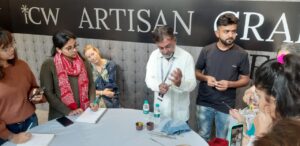
Artist Abdul Gafur Khatri and Jabbar Arab Khatri teaching students during a workshop (Photo: Jabbar Arab Khatri)
They say that the government also helped them to sell their paintings in many ways. “During the Covid-19 peak, the government helped us by placing several orders and helped us sell our products in exhibitions. In this way, they helped us make better known in the field and it also allowed us to get a better price for our art,” says Jabbar.
The Khatris have also begun selling their fabrics through social media, and to preserve the art form, they have begun enrolling younger artists to ensure that the art flourishes. They say they have begun training women and children not only from Kutch, but across India, in Rogan art.
“I have participated in many workshops and taught this art in colleges, mainly the National Institute of Fashion Technology (NIFT) students come to us to learn this art. We teach them to paint on different kind of fabrics like pillow cover, table cloths, wall hangings, sarees, dress materials and a lot of decorative pieces,” explains Jabbar.

